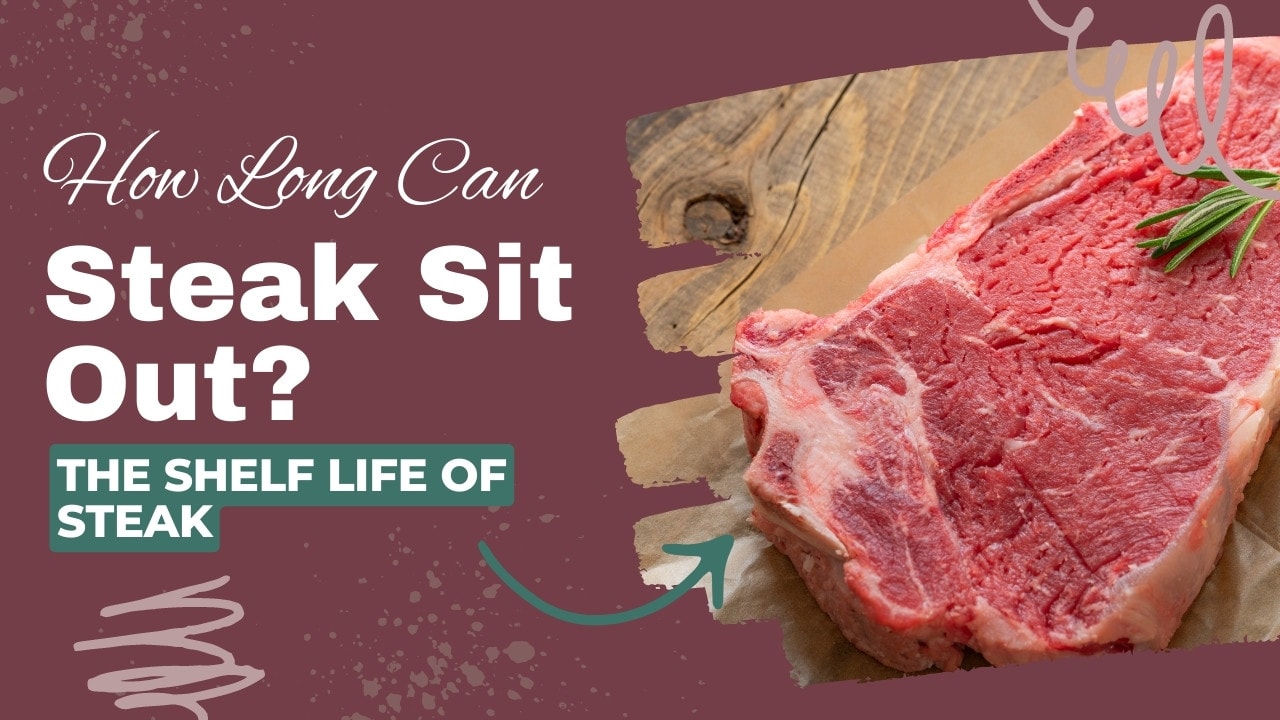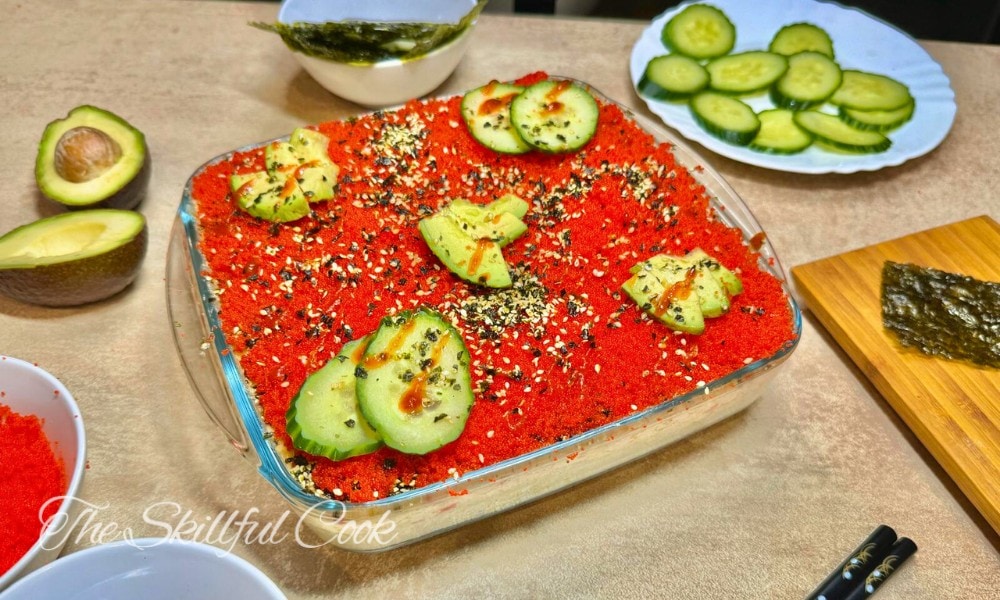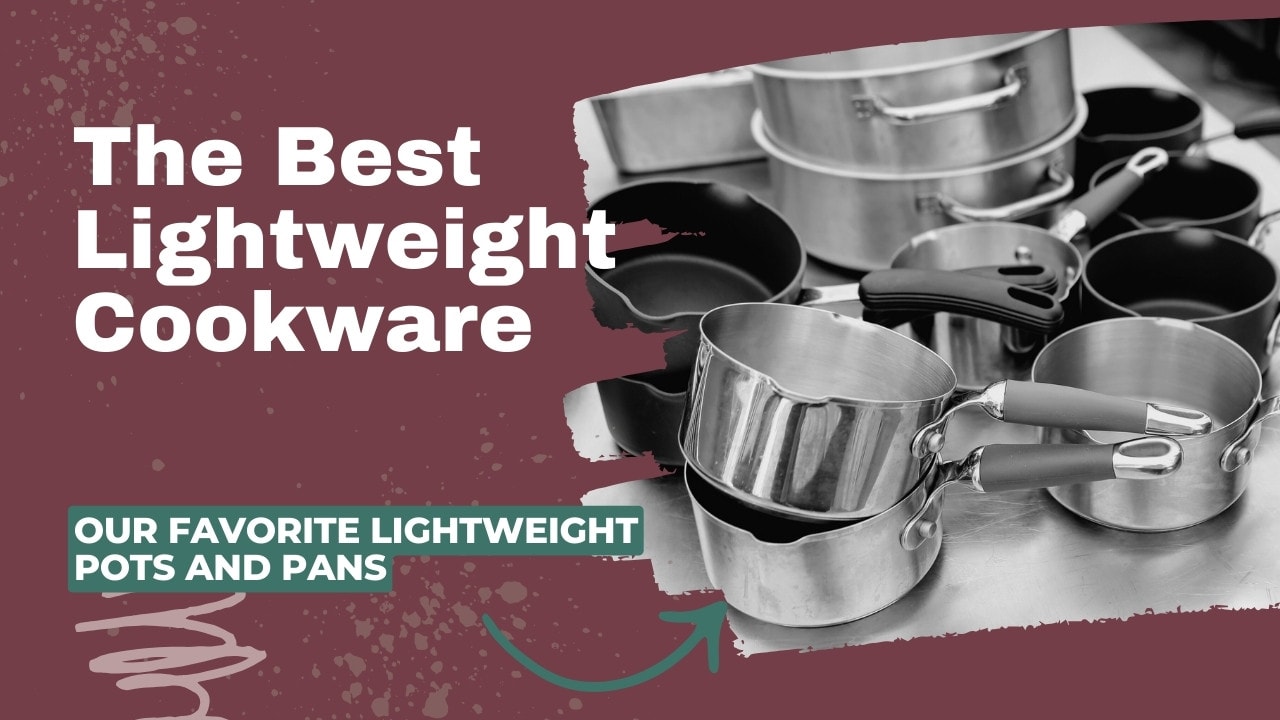You’ve been eagerly waiting to cook that juicy ribeye in your freezer the whole week. On Saturday morning, you take it out of the freezer and leave it on the counter to thaw as you get on with your day.
Three hours later, you remember the steak that’s now sitting in a pool of red liquid. Is that steak safe to eat? Let’s find out.
How Long Can Steak Sit Out?
According to USDA, you shouldn’t leave your raw steak out of the fridge for longer than two hours. On warmer days, when the outside temperature is around 90°F (32°C), cut this time to an hour. The same numbers apply to frozen and packaged steak or any other type of meat.
If you happen to leave your raw steak at room temperature for longer than two hours, throw it away. It may not have any obvious signs of spoiling, but harmful bacteria may have already multiplied to dangerous levels. The toxins they leave behind can make you sick even after the bacteria themselves die in high heat. So, eating your steak can give you food poisoning even if you cook it thoroughly.
Harmful bacteria rapidly multiply at temperatures between 40°F (4.5°C) and 140°F (60°C), also known as the “danger zone.” These bacteria are already present in meat, but lower temperatures inhibit their growth and prevent multiplication to a point that could cause food poisoning.
How Long Is a Cooked Steak Good For?
According to the USDA, you can keep cooked steak in the refrigerator for 3 to 4 days. At room temperature of 70°F (21°C), do not leave cooked steak for more than 2 hours. If the room temperature exceeds 90°F (32°C), you should reduce the maximum time out of the fridge to one hour, including the cooling and eating time.
Although cooking kills most pathogens, some may survive and multiply under favorable conditions.
These critical factors affect the rate of meat spoilage:
The Danger of Leaving Steak at Room Temperature
The ideal environment for bacterial growth is warm and moist, with a protein-rich food source. That’s why a piece of meat outside the fridge is the perfect candidate for contamination.
Harmful bacteria grow so quickly that their numbers double every 20 minutes and can reach dangerous levels in less than two hours.
The most common types of bacteria in raw meat and poultry are Salmonella, E. coli, and Staphylococcus aureus. They usually cause nausea, vomiting, diarrhea, fever, and abdominal cramps. However, rare strains of E. coli, such as E. coli O157:H7, can lead to serious complications, including bloody diarrhea and kidney failure.
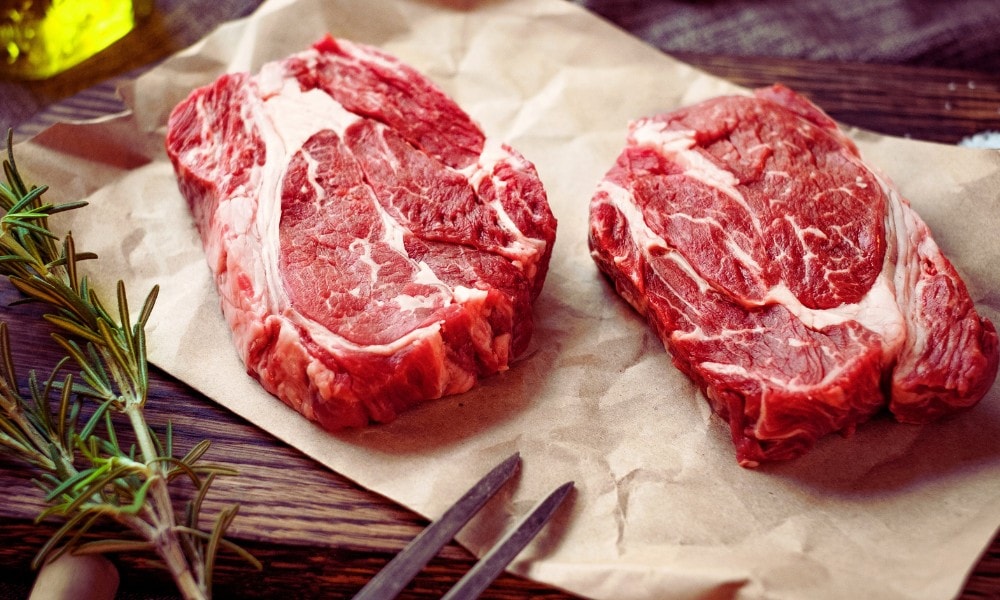
Many home cooks think cooking a potentially contaminated steak to a higher degree can make it safe to eat. But this is a completely false assumption.
While most Salmonella strains die after one minute of exposure to 135°F (57°C) heat, the S. senftenberg 775W strain is 30 times more heat-resistant. Under the right conditions, even E. coli can withstand 158°F (70°C) heat –around the recommended internal temperature for a well-done steak– for at least five minutes.
How To Tell If Steak Has Gone Bad
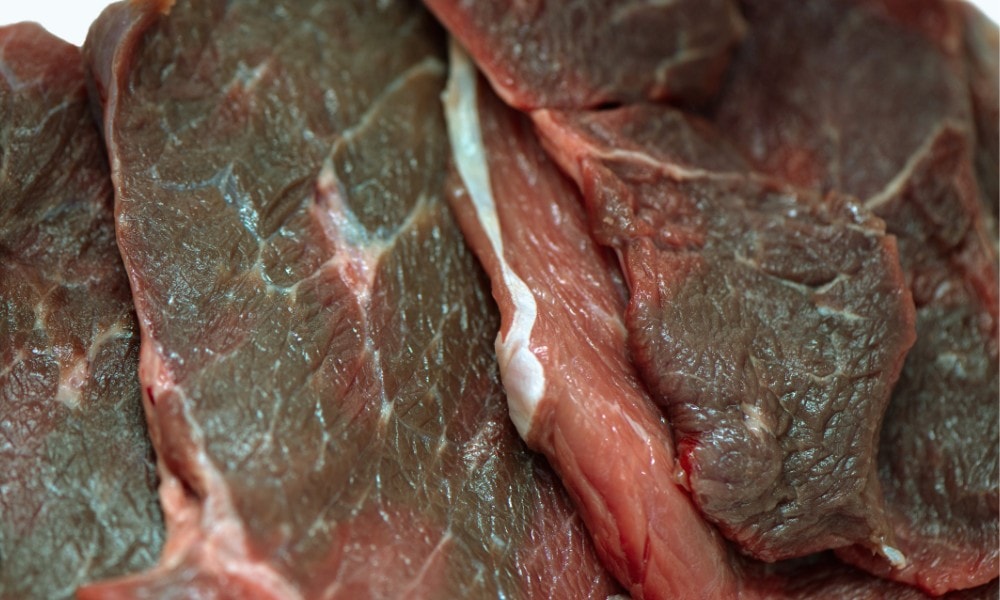
Foul Odor
Spoiled meat has a strong, off-putting smell different from raw meat. If your steak has a sour or ammonia-like smell, it has probably been at room temperature long enough for the proteins to break down due to bacterial growth. Depending on the strain of bacteria infecting your steak, you may also detect an egg-like or musty smell.
Spoiled packaged meat will have a strong sour smell because anaerobic bacteria thrive in environments with limited oxygen, and the meat will rot from within.
Slimy Texture
Bacteria and fungi can leave a sticky, slimy residue as they decompose your steak. During this process, the bacteria produce enzymes that trap moisture and protect them against unfavorable conditions. These enzymes also accelerate the decomposition process and turn the meat dark brown.
Appearance
Discoloration is often a sign of fungal contamination, especially green or bluish spots. Bacteria can also leave dark spots on your steak.
You may be tempted to cut out the discolored parts and cook the rest of the steak, but that’s a terrible idea. Microorganisms have already penetrated the entire steak; they’re only more concentrated in the darker area.
In Detail: How To Tell If Steak Is Bad
How Cooking Affects Bacteria Populations
When food is cooked to a high enough temperature, the heat can destroy the cell walls and proteins of the bacteria, killing them in the process.
Different bacteria have different levels of resistance to heat. For example, E. coli and Salmonella can withstand heat up to 165°F (74°C), whereas Listeria can only survive up to 122°F (50°C).
When it comes to food safety, you should aim for a “log-7” reduction in the bacteria population. That means keeping the food item at a high enough temperature for long enough until 99.99999 percent of the bacteria die. In other words, only one in every one million bacteria should survive after cooking.
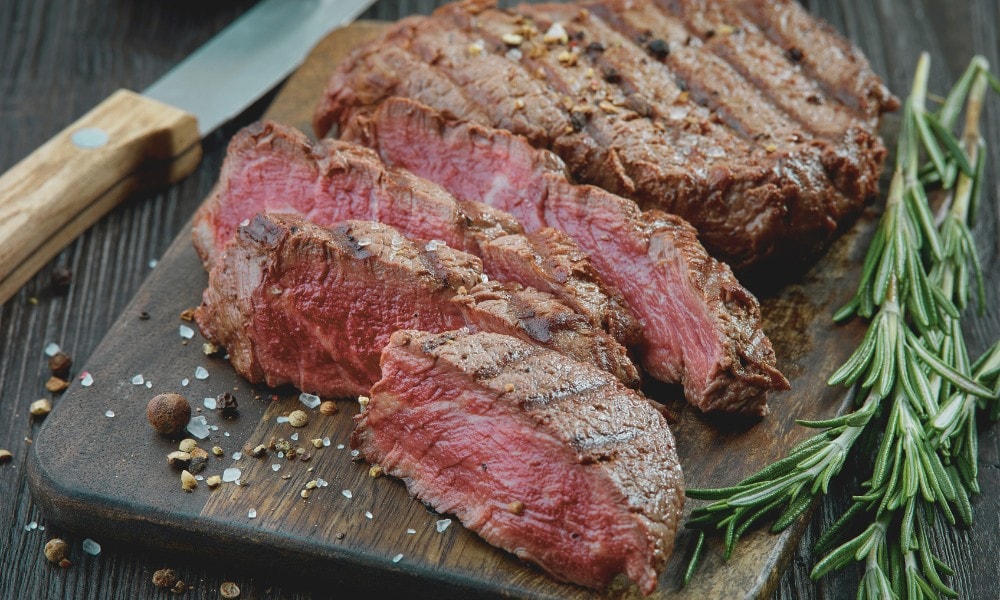
You can achieve this goal by either increasing the cooking temperature or cooking time. For example, you’ll get the same reduction in Salmonella count if you keep the internal temperature of a beef cut at 130°F (54.4°C) for 121 minutes or 155°F (68.3°C) for 30 seconds. Once the internal temperature exceeds 160°F (71.1°C), the large majority of the Salmonella population is killed instantly.
The fat content of your meat also affects the temperature-time combinations. In general, fattier cuts need more exposure to heat.
The table below shows how long you need to maintain your steak’s internal temperature to achieve log-7 reduction at your preferred level of doneness.
| Doneness | Internal Temperature | Duration |
|---|---|---|
| Rare | 130°F (54.4°C) | 121 mins. |
| Medium Rare | 140°F (60°C) | 12 mins. |
| Medium | 145°F (62.8°C) | 4 mins. |
| Medium Well | 155°F (68.3°C) | 23 sec |
| Well-done | 165°F (54.4°C) | 0 sec |
As you can see, rare and medium rare steaks need to spend a long time on heat to be safe to eat, which doesn’t happen in reality. (After you leave a steak on the heat for 121 minutes, it’s not going to be appetizing anymore!) That’s why the USDA doesn’t recommend eating steaks that are less than well done.
Note that some bacteria strains are significantly heat-resistant, so you can’t expect cooking to eliminate all your contamination issues. Instead, you should follow food safety practices throughout your preparation and cooking process to minimize your risk of food poisoning.
How to Safely Handle Your Steak Without Leaving it Out of the Fridge
You may want to leave your steak out of the fridge for three reasons:
In all three cases, there’s a better way to accomplish your goal without risking your health. Let’s see how.
Defrosting
The best and safest way to thaw your steak is to leave it in the fridge for a few hours. Put the steak in a plastic bag and place it in a blow to prevent any drips or leaks. This slow and steady method lets your steak stay at a safe and consistent temperature.
Alternatively, you can use the defrost function on your microwave. Depending on your freezer temperature and the steak’s thickness, I recommend 30 to 60 seconds on each side. You should never blast your meat for too long since the thinner edges will cook before the center gets defrosted.
And if you don’t have a microwave, put your steak in a leak-proof back and submerge it in lukewarm water for half an hour. You can also add a tablespoon of vinegar to the water because most foodborne bacteria don’t grow in acidic environments.
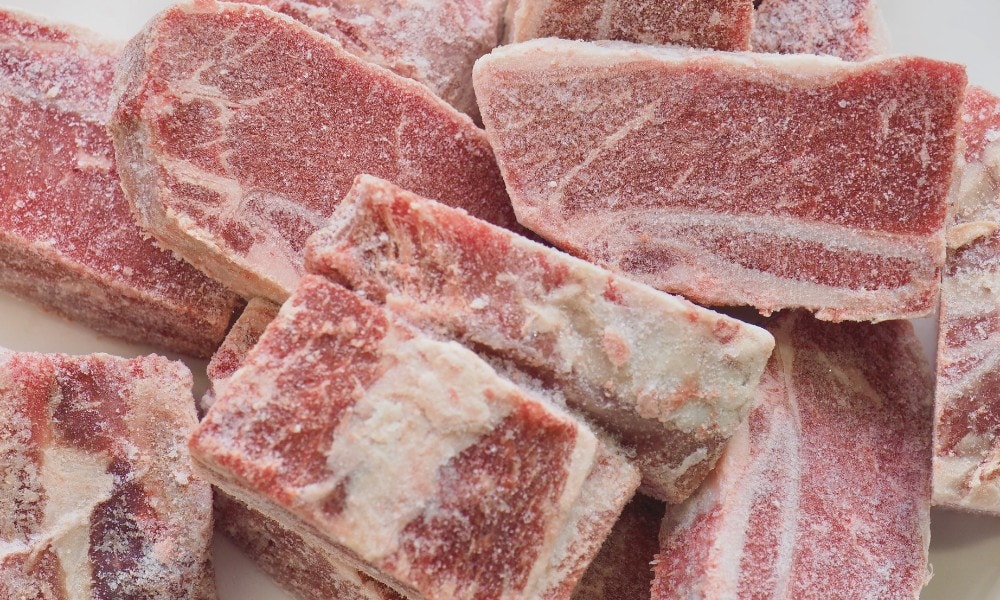
But don’t pour boiling water on your meat since you’ll slightly cook the outside, which will prevent a perfect sear. Once the steak is defrosted, pat it dry with a paper towel and cook it immediately.
Whatever your thawing method, make sure to cook the steak immediately after thawing, especially if using water, the microwave, or techniques that warm the meat to room temperature.
Brining and Marinating
Brining means adding salt to your steak to increase its juiciness after it’s cooked. Marinating, in contrast, aims to increase flavor by adding herbs, aromatics, and usually an acid, such as lemon juice.
In both cases, you need to give your steak time to absorb the salt and flavorful compounds. And you can’t do that while the meat is frozen.
So, first, thaw your steak as I explained above. Then apply your brine or marinate and put the meat in the fridge to let the flavors infuse. Cover your container with a lid or plastic wrap to avoid cross-contamination.
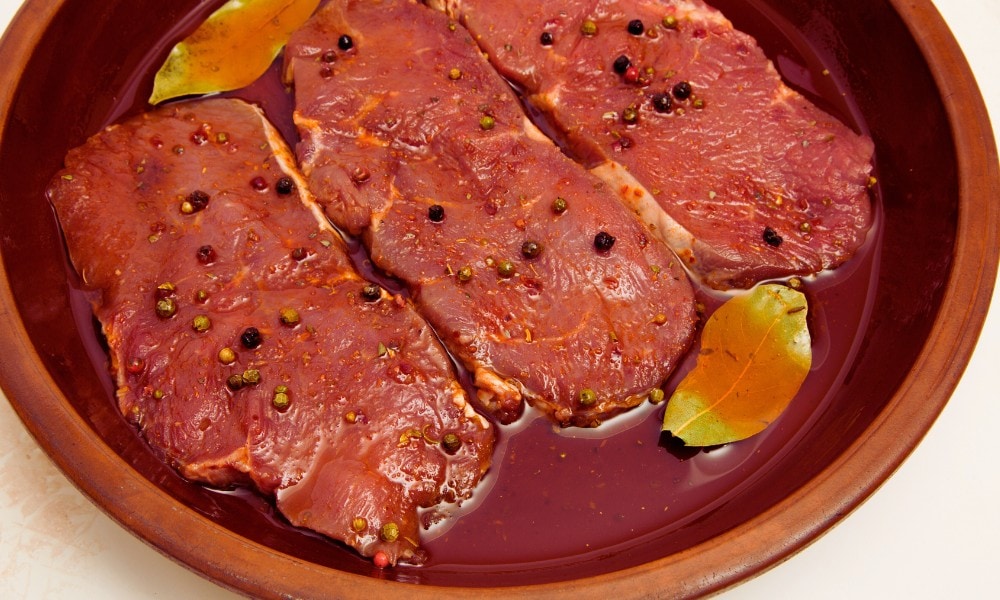
Pro tip: Use a plastic or glass container to marinate your steak. The acid in the mixture reacts with metal containers and alters the steak’s taste.
Searing and Even Cooking
There’s debate on whether leaving your steak at room temperature for 30 minutes ensures even cooking. Chef Kenji Lopez-Alt’s the Food Lab, advises against this step for two reasons:
- It increases the risk of spoilage.
- It has a negligible effect since the steak’s internal temperature won’t rise in 30 minutes.
Instead, dry the surface of your steak with a paper towel to remove excess moisture from the surface. This moisture is a larger barrier to a crispy crust than the steak’s internal temperature. That’s because it takes almost five times as much energy to evaporate the surface water than it does to increase the internal temperature from 0 to 100 degrees. So, removing the excess moisture will be much more effective—and less risky—than leaving the steak at room temperature.
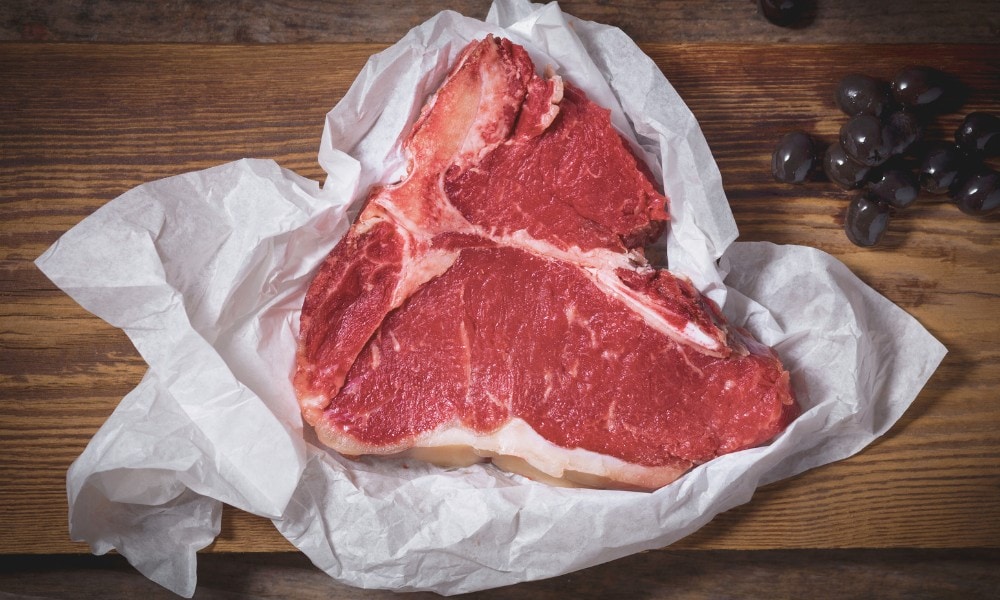
How To Properly Store Raw Steak
Ideally, you should freeze your steak as soon as you buy it if you don’t plan on cooking it in two days.
According to the USDA, fresh beef can be refrigerated for up to five days. But, in my experience, it’ll get stale and lose most of its moisture by the third day. In contrast, you can keep it in the freezer for three months – as long as it’s packaged properly – before it starts to lose its quality.
When freezing your steak, divide it into portions you’ll eat in one sitting and store each in a tightly wrapped plastic bag.
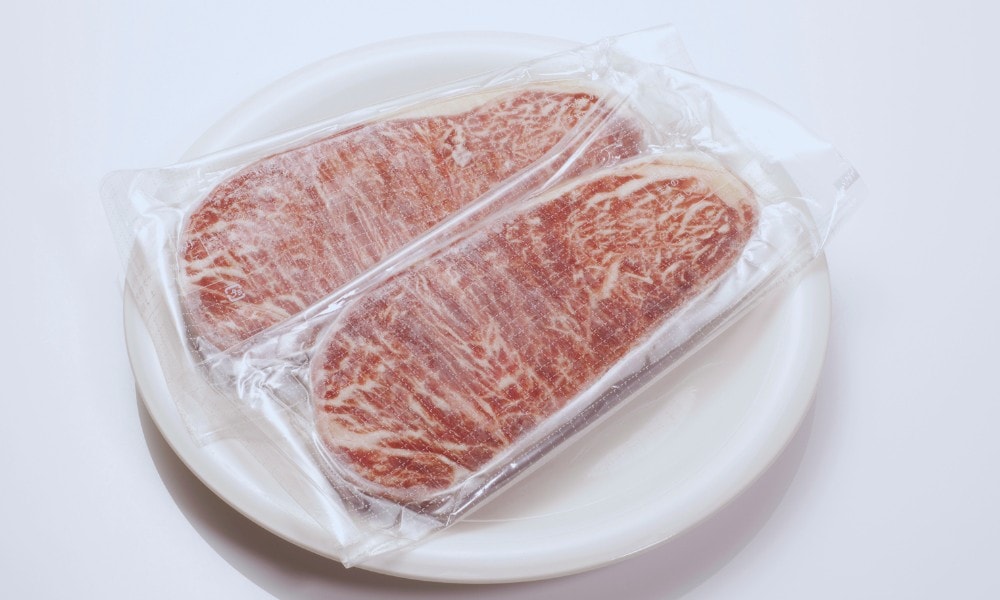
Storing Cooked Leftover Steak
If you plan on eating the leftover steak in less than two days, keep it in the fridge in a tight container to prevent drying. Otherwise, divide it into portions and freeze it in tightly wrapped plastic bags or airtight containers. This way, you’ll avoid freezer burn, and you won’t have to defrost more steak than you need.
Cooked steak can stay in the freezer for up to three months, but you shouldn’t refreeze it once it’s thawed. That’s because when meat is frozen, ice crystals form that damage the cell walls, making it more susceptible to bacterial growth. Refreezing the meat causes more damage to the cell walls, making it more likely to spoil and increasing the risk of foodborne illness.
If you’ve thawed the leftover steak but don’t want to eat it immediately, store it in the fridge for up to two days. And don’t forget to reheat it to an internal temperature of at least 165°F (74°C) before consuming it.
Tips for Handling Cooked Steak Safely
Dealing with cooked steak isn’t hard if you follow proper practices. Here are a few more tips to help you maximize your food safety:
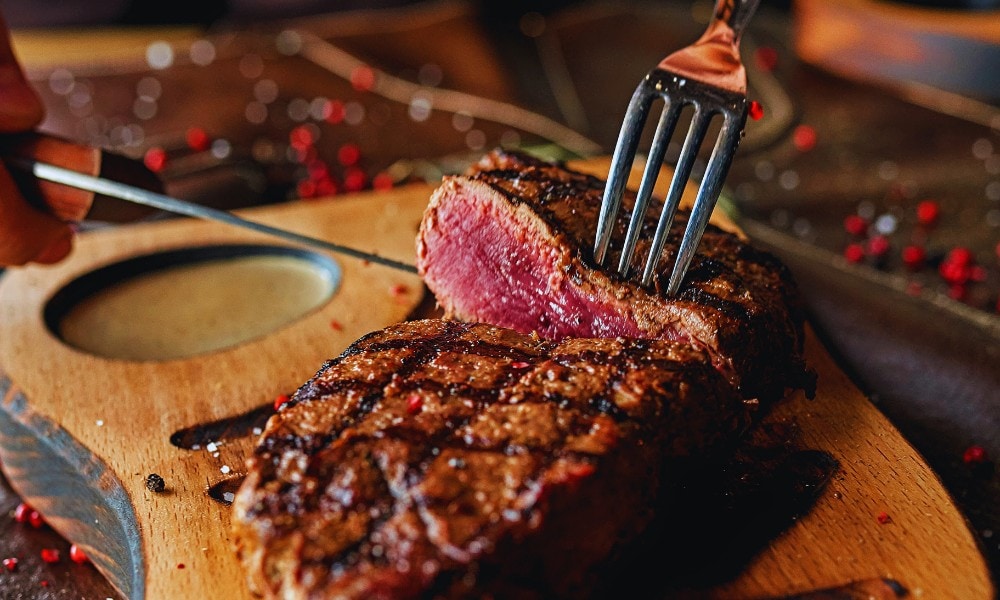
Don’t Let Leftover Steak Go to Waste
Leftover steak isn’t the most appetizing meal since it’s often chewy and lacks moisture, especially if you reheat it to 160°F. That’s why many people leave it in the fridge or freezer until it’s no longer edible.
But with some creativity, you can turn the rest of your steak into another delicious meal that won’t sit in the back of your fridge for long.
My favorite trick is to make steak fajitas. I chop up some bell peppers and onions and fry them over high heat before adding the chopped steak. My fajita seasoning consists of garlic powder, smoked paprika, chilly flakes, ground cumin, dried oregano, and salt. Some people add sugar too, but I like my fajitas hot ‘n’ spicy.
The best thing about a steak fajita is that the steam from the vegetables adds moisture back to your meat.
Here are a few other ideas to try at home if you want something more exciting that old steak:
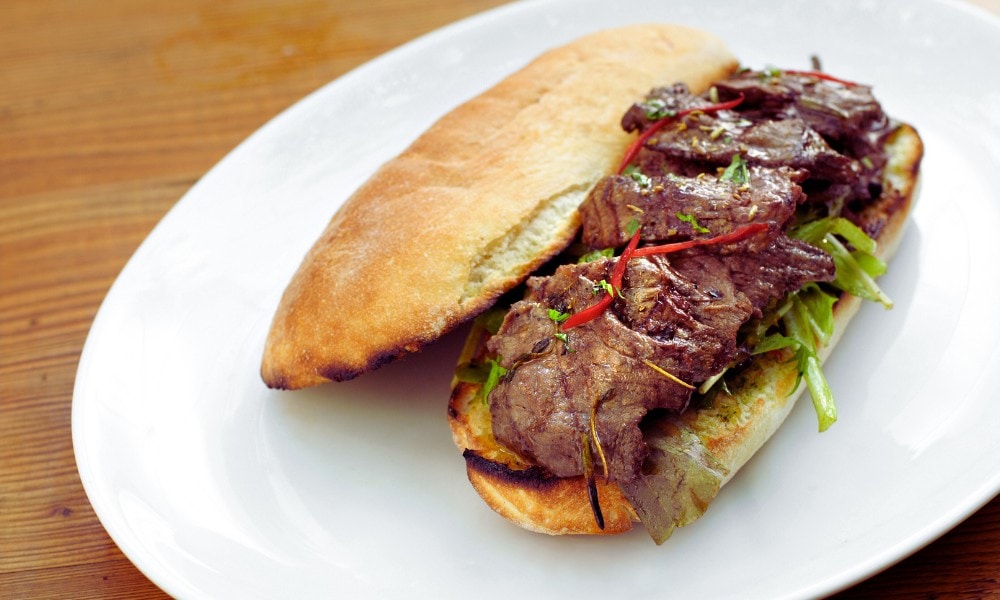
This way, you’ll avoid freezer burn and won’t have to thaw more meat than you need. While it’s not unsafe to refreeze a piece of meat once you defrost it in the fridge, I’ve found that the quality will never be the same. You’ll never get a juicy steak if you refreeze it.
Frequently Asked Questions
What Happens If You Eat a Steak That Has Gone Bad?
Symptoms of foodborne illness include nausea, vomiting, diarrhea, and fever. The first two usually occur within a few hours after eating a spoiled steak, while diarrhea and fever take longer to present.
Sometimes, the symptoms are mild and resolve within a few days. However, in more severe cases, food poisoning can cause dehydration, kidney failure, and even death. If you experience intense symptoms after eating leftover steak, seek medical attention to prevent complications.
Can You Reheat Steak After Keeping It Out?
While reheating a cooked steak can reduce the bacteria population, it won’t remove the toxins that bacteria may have already released into the meat. Consuming those toxins can give you food poisoning.
So, if your steak has spent more than two hours on the kitchen table, you shouldn’t risk eating it. The longer it sits past two hours, the less you should hesitate to throw it away.
Can You Let Steak Sit Out Overnight?
No. Never leave steak outside for longer than two hours, as it can lead to harmful bacterial growth. If you want to thaw your steak overnight, put it in the refrigerator inside a bowl to catch any drippings.
How Long Can You Store Raw Steak in the Fridge?
The USDA recommends keeping beef or lamb steaks in the fridge for no longer than five days. However, if you won’t cook your steak within two days, freeze it. Otherwise, you risk food contamination and a less delicious steak.
What Is the Ideal Temperature for Storing Raw Steak?
The best temperature to store raw steak is below 40°F (4.5°C). The harmful bacteria in the meat won’t have the conditions to multiply at this temperature.
You should store your raw steak in the coldest part of your refrigerator, such as the back or bottom shelf. Never keep the meat in the door since the temperature there can fluctuate.
Wrapping Up
Leaving raw or cooked steak out for longer than two hours can put you at risk of food poisoning. To enjoy a steak that’s both safe and perfectly done, let it thaw in the fridge and only take it out a few minutes before cooking.
And don’t leave the leftovers on the kitchen table. The fridge is, again, the safest place to store cooked steak.
If you have any questions or comments, drop them below.

